As winter chill settles into our homes, one of the more frustrating issues homeowners experience is frozen pipes. Not only can this icy menace cause great inconvenience, but it can also cause irreparable damage to your plumbing system.
Thus, learning how to thaw frozen pipes safely becomes an essential household skill. With that in mind, we have compiled this comprehensive guide on defrosting techniques, and for expert frozen pipe repair in Alabama, rely on experienced professionals to address any plumbing issues effectively. Before exploring why pipes freeze, let’s ensure you’re equipped with the knowledge to handle frozen pipes with care.
What are Frozen Pipes?
As temperatures plunge below the freezing point, water in pipes begins to freeze and expand. It exerts immense pressure against them, leading to cracks or burst pipes due to the expansion. Frozen pipes are more than an inconvenience. They can pose substantial property damage if left unaddressed.
Identifying Frozen Pipes
As the initial step of any thawing process, the first step should be identifying whether your pipes have frozen. There are certain signs to look out for, such as faucets that refuse to flow when turned on or only release a trickle when turned on.
Besides, other signs involve frost accumulating visibly on exposed pipes or unusual odors from drains and faucets. Once confirmed that they are indeed frozen pipes, thawing can begin.
Safety First: Precautions when Thawing Frozen Pipes
Before we discuss how to thaw frozen pipes, it is vital to emphasize the importance of safety for you and your home. Thus, several precautionary steps should be observed:
Turn Off the Main Water Supply: This preventive step can help avoid further pipes freezing and alleviate any additional pressure.
Open the Faucet: Before thawing out a frozen pipe, opening its associated faucet can let any steam or melting ice escape and reduce the risk of burst pipes.
Avoid Open Flames: Using open flame devices such as a blowtorch, kerosene heater, or propane heater poses serious fire hazards. It could destroy pipes as well as increase their fire risk significantly.
Monitor Your Pipe: Keep an eye on your pipe while it thaws out. If any leaks or cracks appear, cease this process immediately and consult a professional plumber immediately.
Methods on How to Thaw Frozen Pipes
Once the necessary safety measures are in place, we can explore various effective techniques on how to thaw frozen pipes.
The Hair Dryer Method
A hairdryer is one of the safest and easiest methods of defrosting frozen pipes. Warming the closest pipe to the faucet and gradually working towards colder areas can take some time if extensive freezing is present. Patience should be exercised as it may take some time.
Utilizing Heat Lamps or Space Heaters
If your frozen pipes are easily accessible, another effective strategy for defrosting is portable heaters or heat lamps. As with the hairdryer method, ensure the heat can reach all pipe parts requiring defrosting. You can start near the faucet and move backward.
Utilizing Hot Towels
Hot towels offer another effective, simple approach for unfreezing frozen pipes. Use a soaked towel in hot water and wrap it around the frozen section, with its heat quickly diffusing to facilitate ice melting. As soon as it cools down, replace it with a fresh towel.
Electrical Heating Tape
Electrical heating tape could be an ideal long-term solution for long-term prevention of pipe freezing. By wrapping it around your pipe and providing steady heat throughout, this tape provides continuous warmth to prevent freezing. Some tapes are self-regulating – they switch on and off automatically as required.
How Long Should It Take to Thaw Frozen Pipes?
The time required for unfreezing frozen pipes depends on several variables. It includes their length and diameter, material composition, freezing severity, and method used. Using methods like hairdryers, heat lamps, or hot towels, it typically takes anywhere from half an hour up to several hours until all pipes have been unfrozen.
What to Do if Pipes Burst
No matter how hard we try, pipes may burst during thawing. In such an instance, the first thing to do is turn off your main water source to minimize water damage and contact a professional plumber to repair the damage. The burst pipes often result in extensive water damage that needs expert repair to address properly.
Preventing Frozen Pipes: One Stitch in Time Saves Nine
Taking preventive steps now may save you the hassle of unfreezing your system later. Here are a few preventive steps you should consider taking:
Insulate Your Pipes: Pipes located in unheated spaces such as a basement, attic, or garage should be insulated against heat loss by using insulation materials.
Seal all cracks and openings: Cracked or open areas could let in cold air, freezing pipes and causing maintenance costs and efficiency complications.
Maintain a Consistent Temperature: Maintaining a constant temperature in your home can help protect pipes from freezing over.
Allow faucets to dribble: When freezing temperatures are anticipated, let the faucets drip slightly to encourage water movement within your pipes.
For Reliable Solutions, Consult the Experts
Dealing with frozen pipes can be a challenging and complex undertaking. But by understanding their science and taking preventive steps to thaw out frozen ones safely, you can reduce damage and disruption caused by this winter problem. When in doubt, it’s always wise to call in professional help.
If you seek professional help, contact Roto-Rooter Plumbing & Water Cleanup. We have exceptional plumbing solutions to offer.



